Shrimp gumbo is a classic southern dish from Louisiana, made with a dark, nutty roux and bold flavors from andouille sausage, seasoned shrimp, and the “holy trinity” of onion, celery, and bell pepper. The result is a smoky, spicy stew that’s rich, hearty, and full of soul. Every bite blends tender shrimp, savory sausage, and a thick, flavorful broth — the true taste of southern comfort.
Shrimp Gumbo
Gumbo...With Shrimp
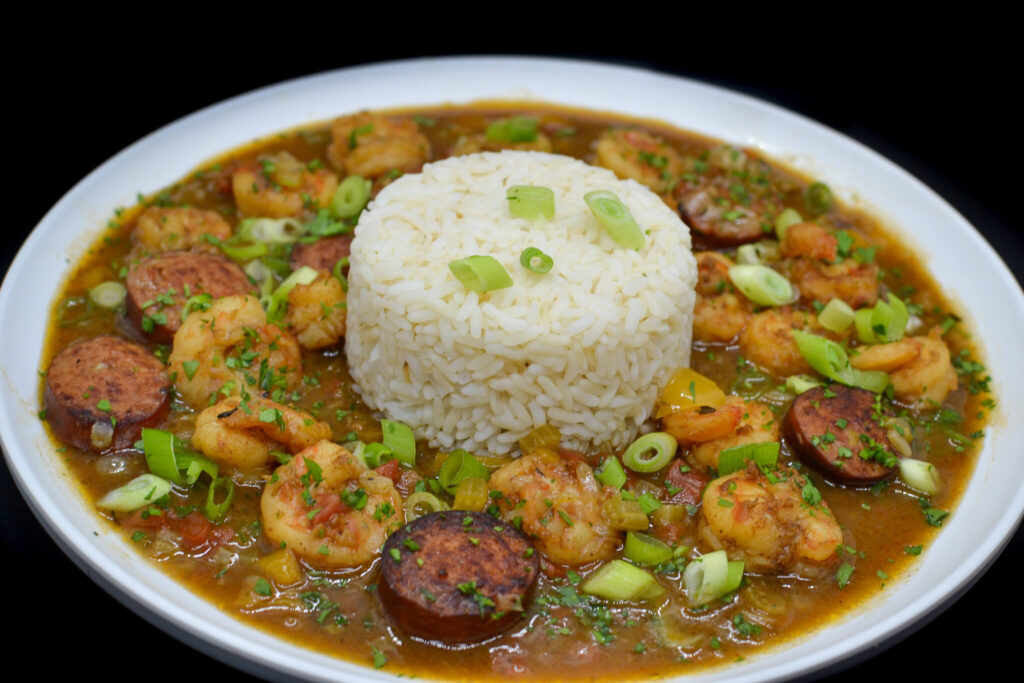
Ingredients For Shrimp Gumbo
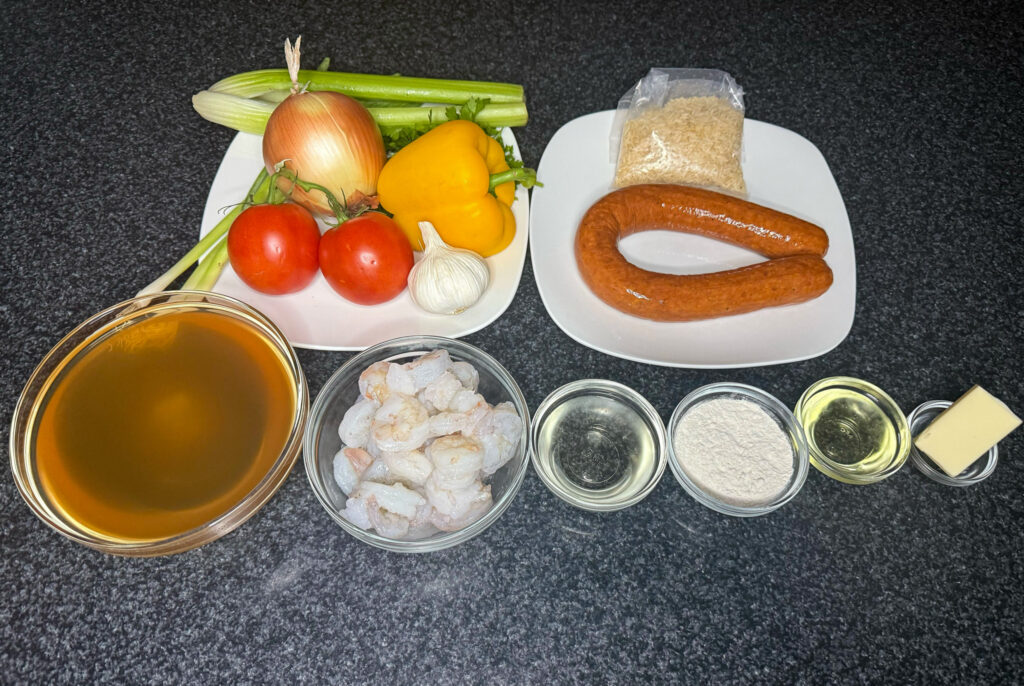

Produce
1 medium yellow onion, diced
1 green bell pepper, diced
2 celery stalks, diced
4 cloves garlic, minced
Chopped parsley
Green onions
2 Tomatoes
Refrigerated
¼ cup unsalted butter

Grocery
¼ cup vegetable oil
½ cup all-purpose flour
½ cup dry white wine
1 quart seafood stock

Meat
1 lb large shrimp, peeled and deveined
12 oz andouille sausage, sliced

Spices
1 tsp paprika
½ tsp cayenne
1 tsp thyme
1 tsp salt
½ tsp black pepper
1 tsp Worcestershire sauce
Cajun seasoning (for shrimp)
How To Make Shrimp Gumbo
Step 1
Cook Andouille
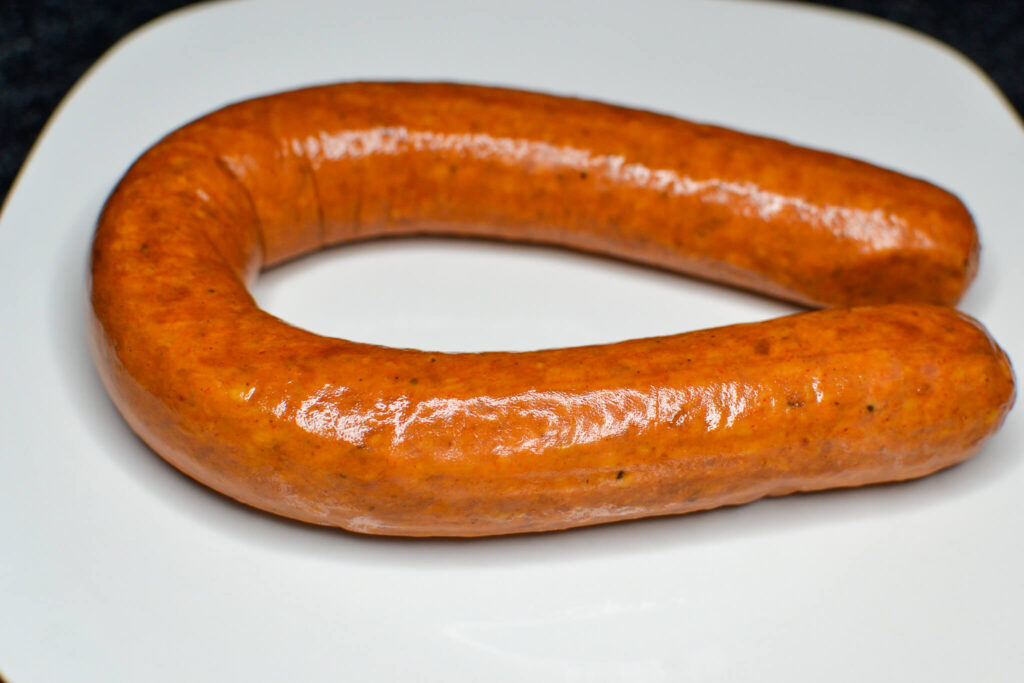
Start by slicing your andouille sausage into thick, even rounds. This step sets the tone for the entire gumbo, because andouille is more than just a supporting ingredient—it’s the foundation of flavor. The sausage’s smoky, garlicky spice brings that unmistakable Louisiana character that ties the whole dish together. Use a good-quality andouille if you can find it, one that smells slightly peppery and has that deep, cured aroma. Slice it about a quarter-inch thick so each piece holds its texture through the simmer without drying out.
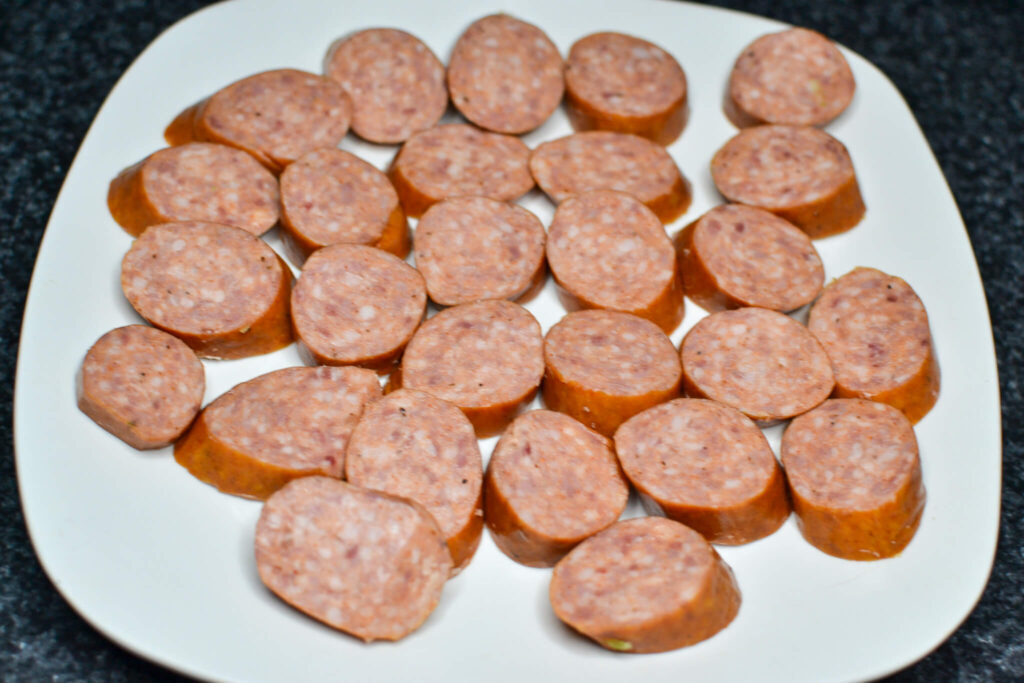
Set a large, heavy-bottomed pot or Dutch oven over medium heat. Once it’s hot, add your sausage slices in a single layer. You should hear that instant sizzle—the sound of fat rendering and flavor building. Let them cook undisturbed for a couple of minutes before flipping. As they sear, the edges will turn golden and crisp, and the color will deepen into a rich mahogany brown. You’ll know it’s perfect when your kitchen fills with that savory, smoky aroma that’s impossible to mistake. Don’t rush this stage; it’s what gives the gumbo its backbone.
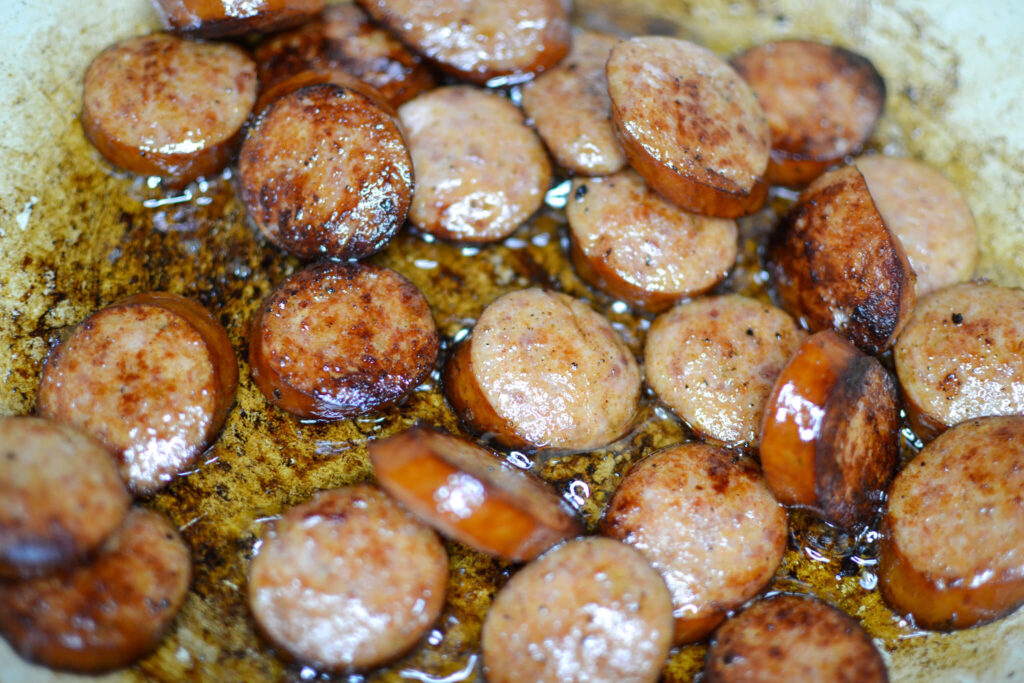
As the andouille cooks, its fat begins to melt and coat the bottom of the pot. This rendered fat will blend seamlessly into your roux later, carrying all of that deep, spiced flavor throughout the gumbo. Once both sides are evenly browned, transfer the sausage to a plate or bowl and set it aside. Take a moment to look at the bottom of your pot—you’ll see a layer of dark, caramelized bits sticking to the surface. That’s called the fond, and it’s culinary gold. Don’t wipe it out or scrape it clean; those browned bits are packed with concentrated flavor that will dissolve into your roux and help create that rich, earthy undertone gumbo is famous for.
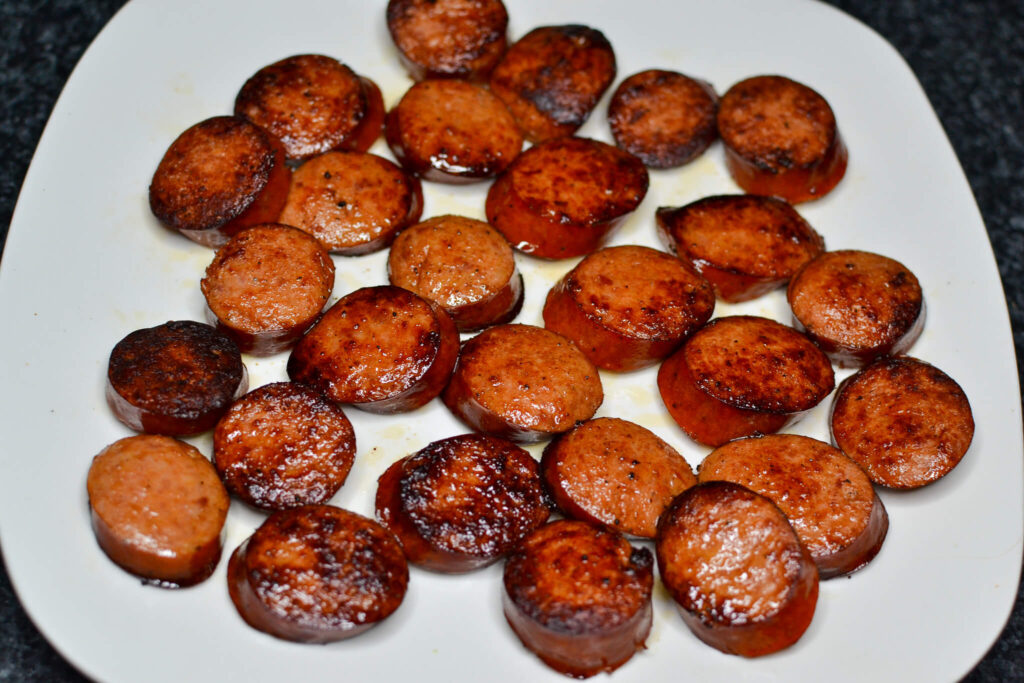
By now, the air in your kitchen should smell like smoky heaven—pepper, garlic, and spice mingling in the air. This is the point where you realize gumbo isn’t just a dish; it’s an experience. The sausage has done its job, seasoning the pot and setting the stage for what comes next. Once you’ve removed it from the heat, reduce your burner slightly and get ready to build the base of your gumbo. What’s left in the pot isn’t a mess—it’s the heart of your next layer of flavor.
Step 2
Make The Base
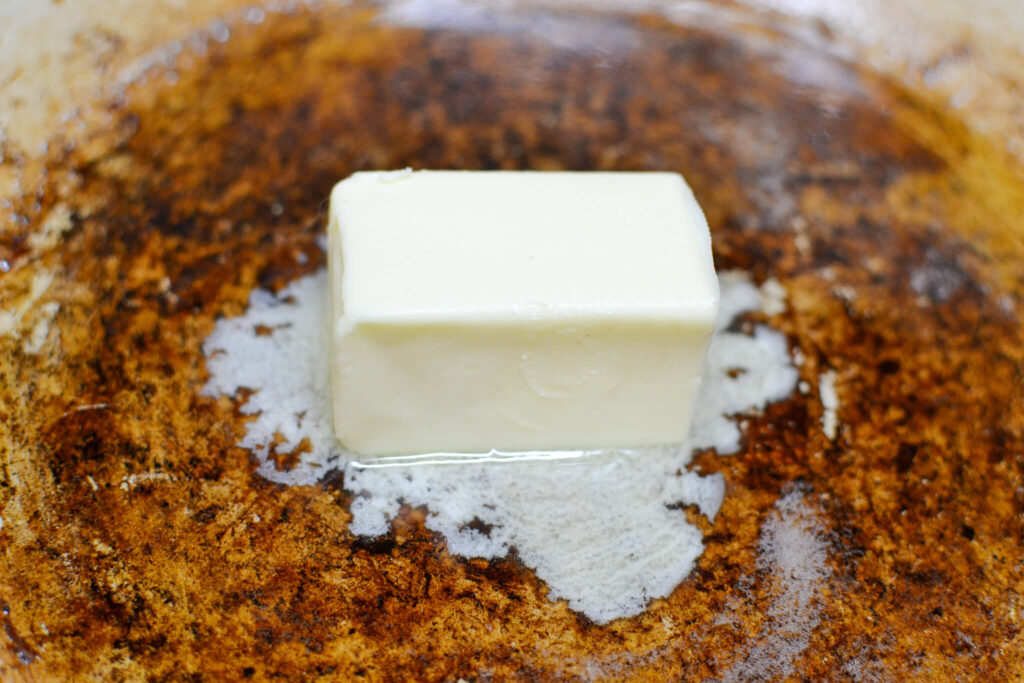
With the sausage removed, you’re left with a pot that already smells incredible—smoky, spicy, and seasoned with the essence of andouille. This is exactly what you want. Don’t wash it, don’t wipe it—just turn the heat down slightly and get ready to build your roux. Add the butter and oil together, letting them melt into a golden pool that picks up every bit of flavor from the bottom. Once the mixture begins to shimmer, slowly sprinkle in the flour while whisking constantly. The flour will absorb the fat and start transforming before your eyes.
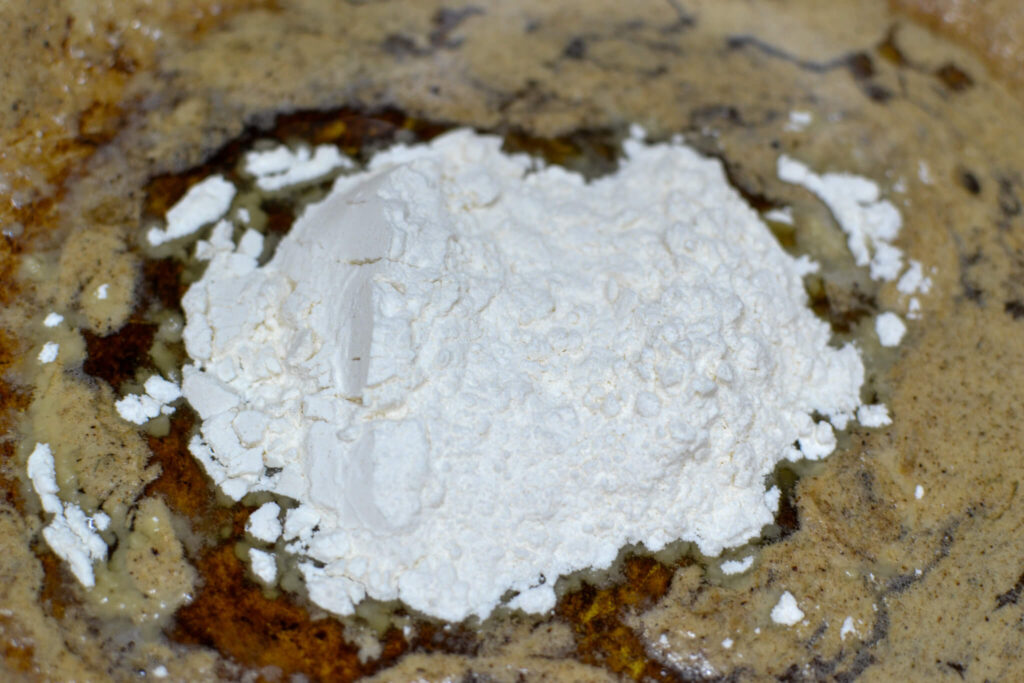
At first, the roux will look pale and clumpy, but as you keep whisking, it’ll smooth out and deepen in color. This step is where the magic happens. Making a proper roux is a test of patience—you can’t rush it. Over the next 15 to 20 minutes, the mixture will shift from a light beige to peanut butter brown, then to the deep shade of milk chocolate. Keep your whisk moving constantly, scraping the edges and bottom of the pot to prevent scorching. As it darkens, the aroma changes too—it starts off like toasted bread and gradually turns nutty, rich, and warm. That scent is your signal that the roux is ready to bring your gumbo to life.
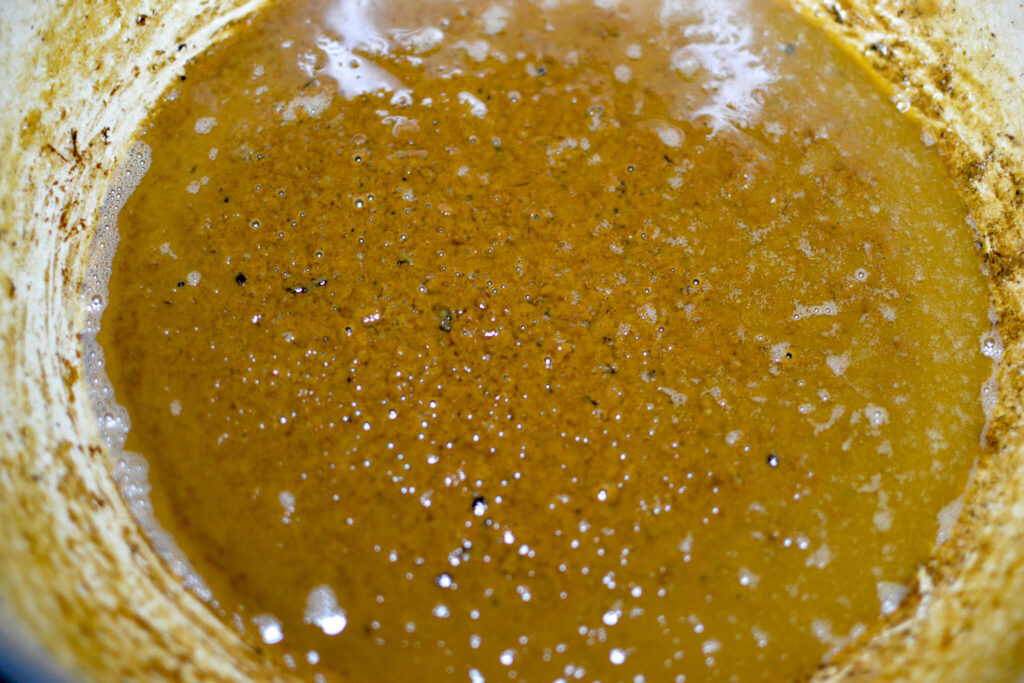
Keep your whisk moving constantly, scraping the edges and bottom of the pot to prevent scorching. As it darkens, the aroma changes too—it starts off like toasted bread and gradually turns nutty, rich, and warm. That scent is your signal that the roux is ready to bring your gumbo to life.
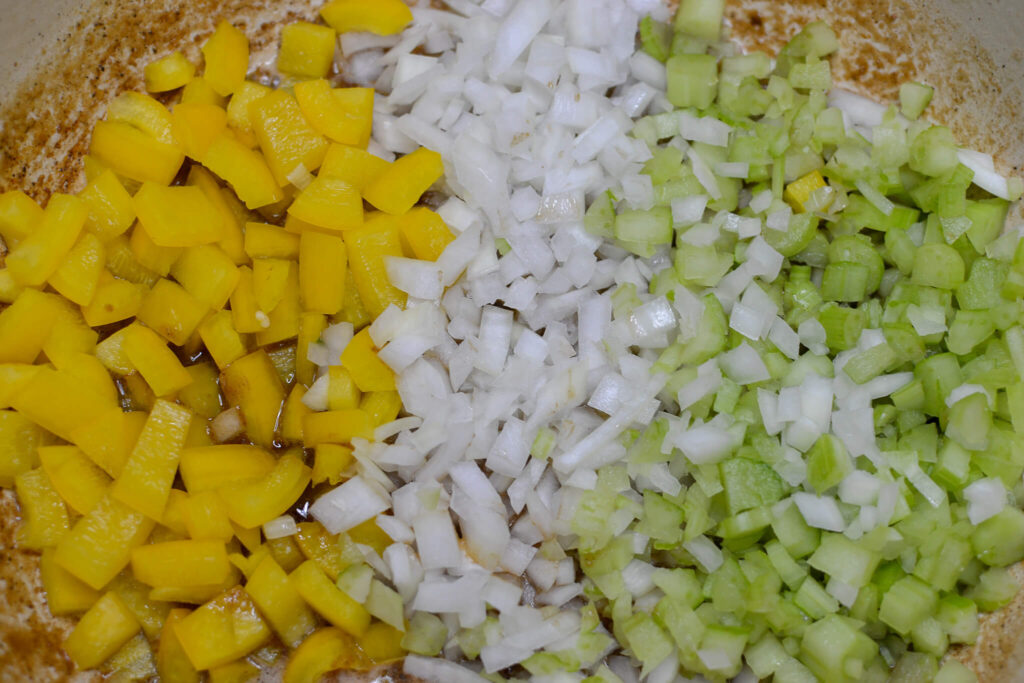
Once the roux hits that perfect dark brown, toss in your diced onion, celery, and green bell pepper—the holy trinity of Cajun cooking. The vegetables will sizzle and soften as they hit the hot roux, releasing their moisture and helping to deglaze the pot naturally. Stir well to coat every piece, letting them cook until translucent and glossy. As they soften, the mixture loosens slightly and becomes almost silky. This step is where the base starts to take shape—the deep brown of the roux mixing with the green of the peppers and the pale yellow of the onions to form that unmistakable gumbo color.
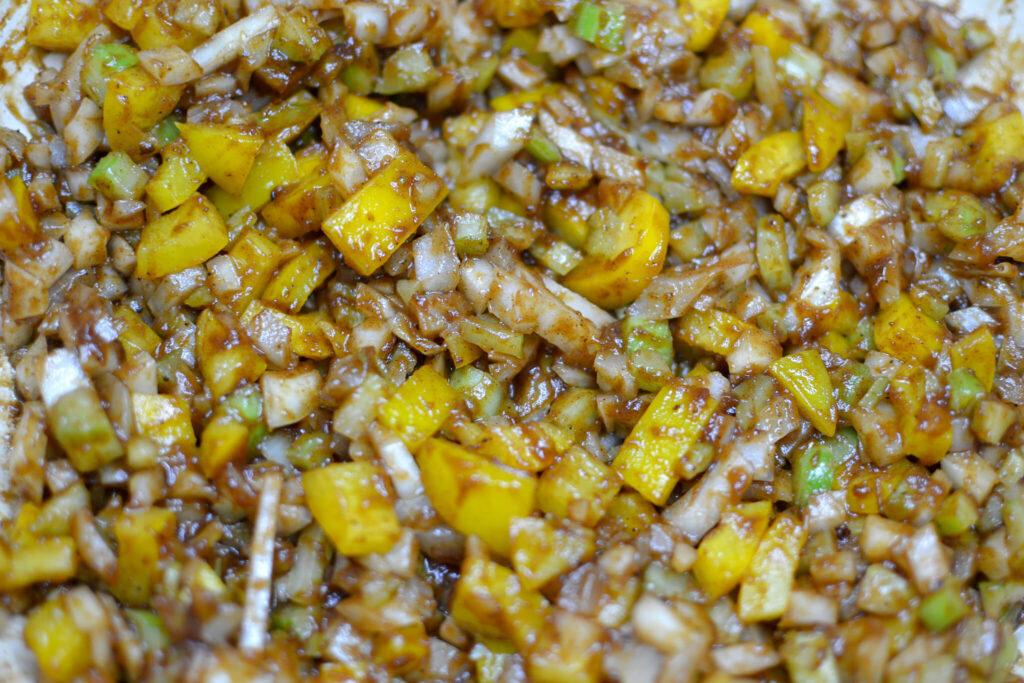
Stir well to coat every piece, letting them cook until translucent and glossy. As they soften, the mixture loosens slightly and becomes almost silky. This step is where the base starts to take shape—the deep brown of the roux mixing with the green of the peppers and the pale yellow of the onions to form that unmistakable gumbo color.
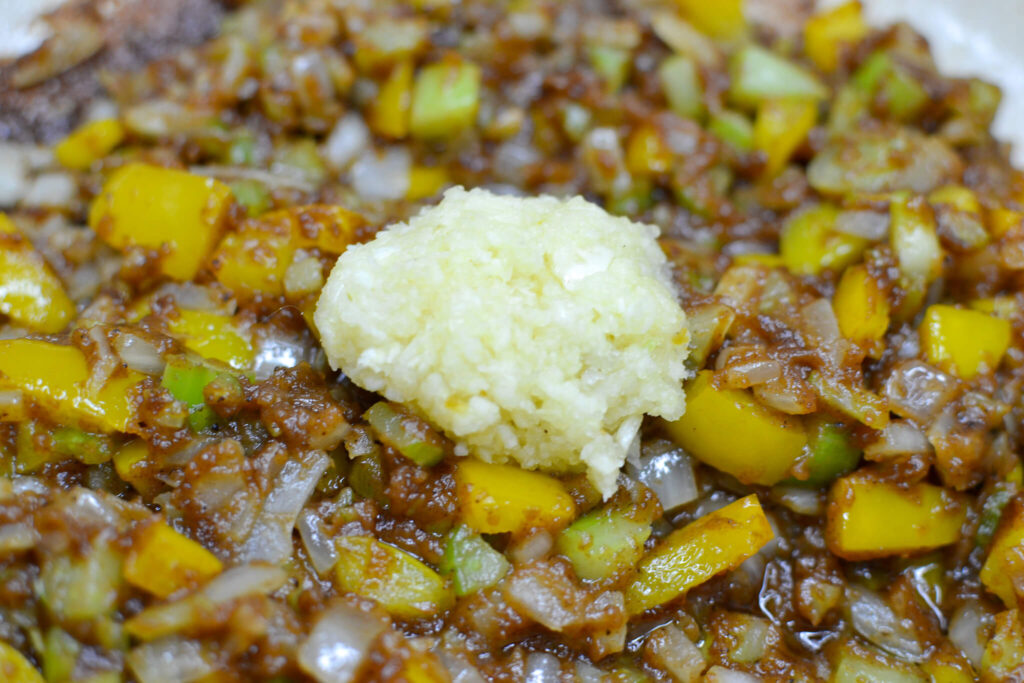
Next, add in the minced garlic and let it cook just long enough to release its fragrance—no more than a minute. Then, sprinkle in your seasonings: paprika for warmth, cayenne for a subtle kick, thyme for earthiness, and black pepper for balance. The spices will bloom in the heat, filling the air with that signature Cajun aroma that’s both savory and comforting. Stir well, letting the flavors meld into the base.
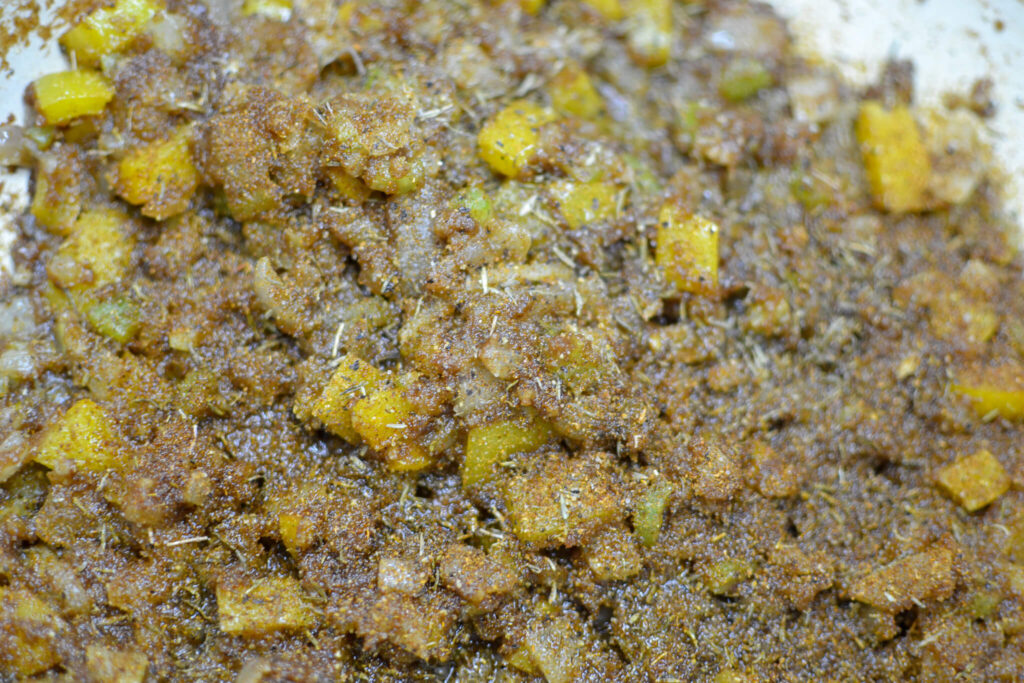
Then, sprinkle in your seasonings: paprika for warmth, cayenne for a subtle kick, thyme for earthiness, and black pepper for balance. The spices will bloom in the heat, filling the air with that signature Cajun aroma that’s both savory and comforting. Stir well, letting the flavors meld into the base.
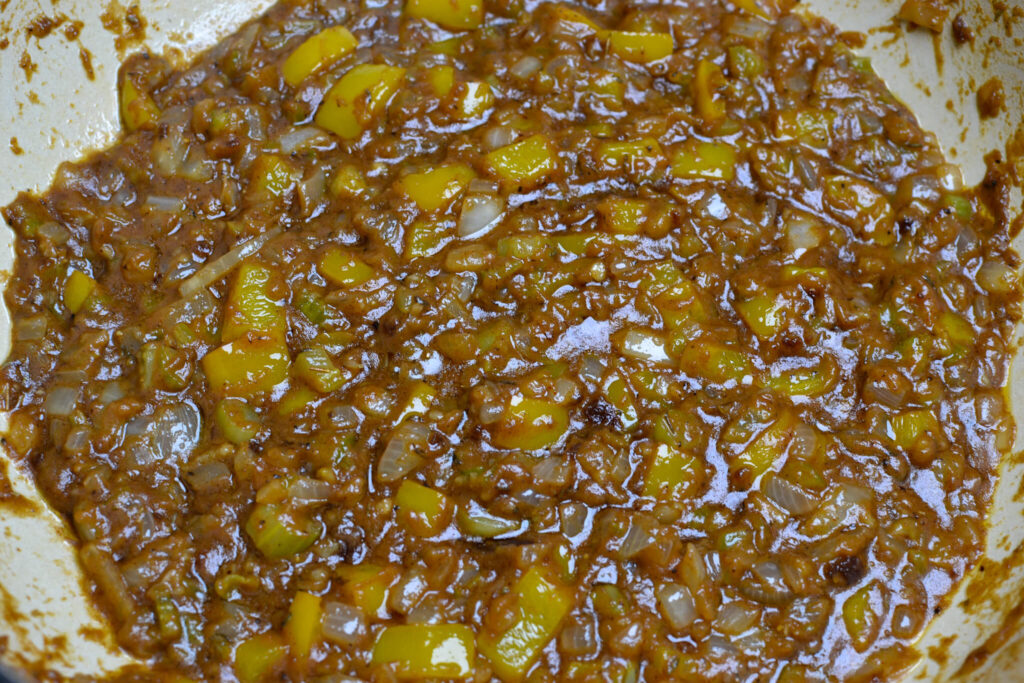
Finally, pour in the white wine. It should hit the pan with a soft hiss, instantly loosening the fond from the bottom. Use your spoon to scrape up every bit of that browned flavor as the wine reduces. It’s a short step, but one that brings brightness and acidity to balance the richness of the roux. Once the wine has mostly cooked off, take a step back and admire what you’ve built—your base is dark, glossy, and aromatic, bubbling gently with layers of flavor ready for the next stage.
Step 3
Make The Gumbo
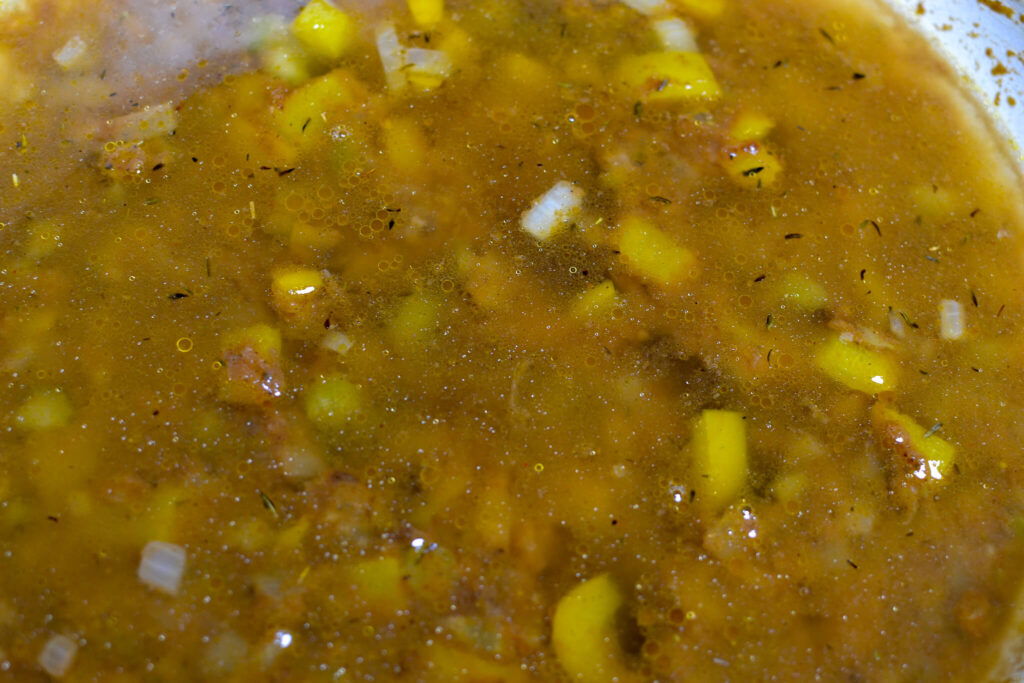
Now that your roux and base have developed into a rich, dark foundation, it’s time to transform everything into a true gumbo. Slowly pour in the seafood stock while stirring constantly. The liquid will sizzle at first, then gradually blend with the roux, turning thick and glossy. At this stage, your gumbo will look muddy and dense—that’s a good thing. Keep stirring to fully incorporate the liquid, and within minutes, it will smooth into a velvety, rich broth. You’ll notice the roux gives it a deep caramel-brown color and an earthy aroma that feels warm, familiar, and distinctly southern.
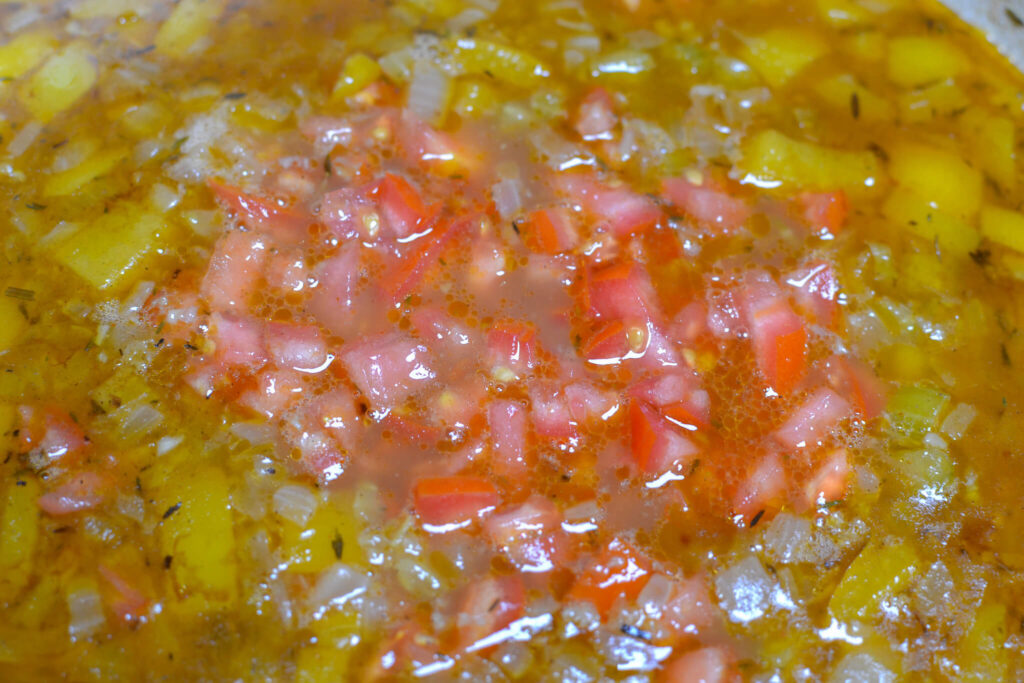
Once the stock is in, add the diced tomatoes, Worcestershire sauce, and bay leaves. Stir everything together until it’s evenly distributed, then bring the mixture up to a gentle simmer. You’ll want small, slow bubbles here—not a rapid boil. Gumbo rewards patience; the longer it simmers, the more the flavors deepen and marry together. Let it cook uncovered for 30 to 40 minutes, stirring occasionally to make sure nothing sticks to the bottom. During this time, the gumbo will thicken naturally, and you’ll see the surface develop a soft sheen as the oils rise. The vegetables will melt into the broth, leaving you with a cohesive, flavorful base that’s thick enough to coat the back of a spoon.
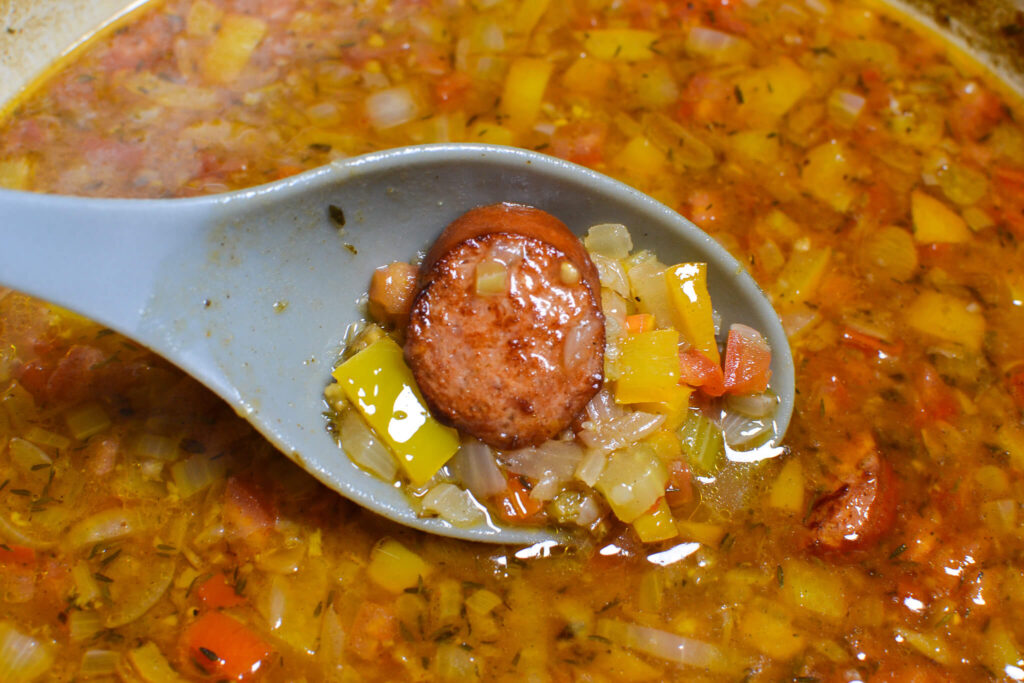
As it simmers, take a moment to taste. This is where you can adjust your seasoning—add a pinch more salt, a little extra cayenne if you like heat, or a dash of black pepper for balance. The gumbo should taste layered: smoky from the roux, savory from the sausage fat, and lightly tangy from the tomatoes and wine. When it tastes right, stir the browned andouille sausage back into the pot. You’ll hear a faint sizzle as it hits the liquid and releases another burst of smoky aroma. Let it simmer for another 10 minutes or so to let the sausage infuse its flavor into the broth.
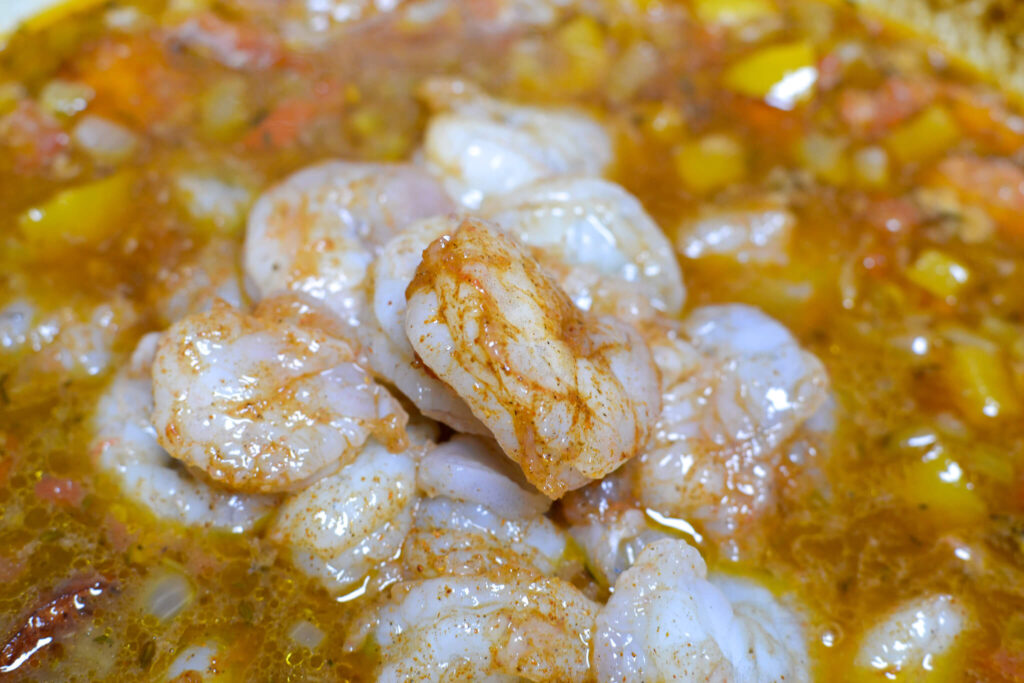
While the gumbo continues to bubble, it’s time to prepare your shrimp. Pat them dry with a paper towel and toss them in Cajun seasoning until evenly coated. The spice blend gives the shrimp a warm, red tint and that signature Louisiana heat. Once the gumbo is ready, gently stir in the shrimp. They’ll cook quickly—only three to five minutes until they turn pink and tender. Be careful not to overcook them; you want them juicy and delicate, not rubbery. When the shrimp are done, remove the pot from the heat and let it rest for a few minutes. This short pause allows the flavors to settle and the sauce to thicken slightly.
What you’ll have now is pure southern comfort: a pot of shrimp gumbo that’s rich, smoky, and alive with Cajun flavor. The roux has done its work, the sausage has lent its depth, and the shrimp bring brightness and texture to every spoonful. The air around you smells like spice and warmth—proof that you’ve just captured the soul of Louisiana cooking right in your kitchen.
Step 4
Make Rice
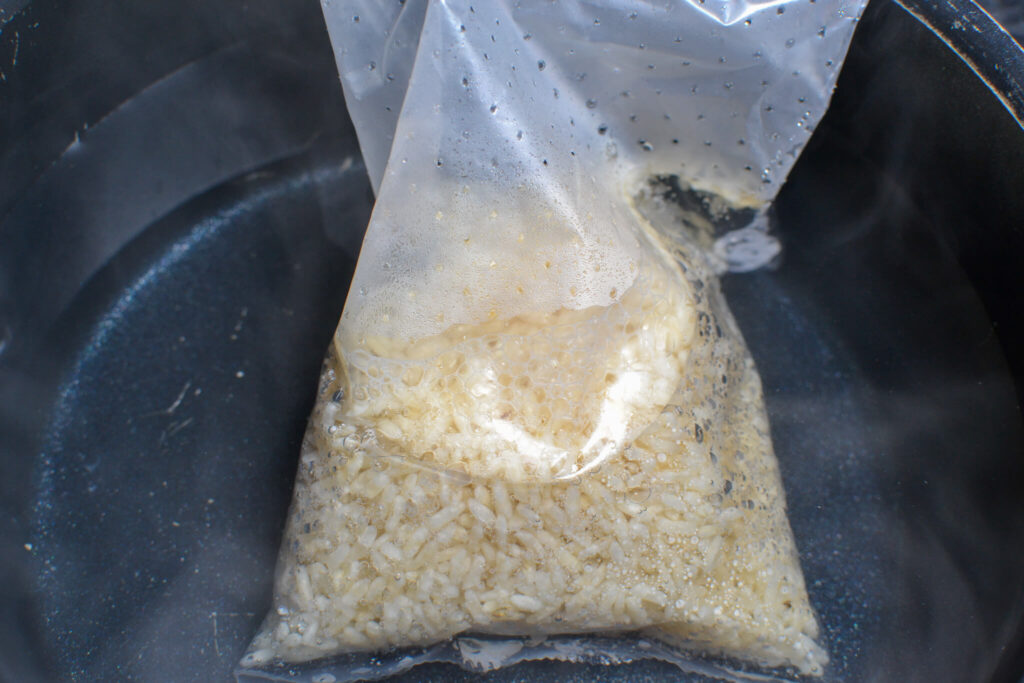
While the shrimp gumbo rests, it’s time to make the rice that will bring it all together. In a separate pot, bring salted water to a boil. Add the rice and cook until tender and fluffy, stirring occasionally to prevent sticking. The rice might seem simple, but it’s what balances the richness of the shrimp gumbo—it soaks up the sauce, catches the shrimp and sausage, and gives every bite structure. Once it’s cooked through, drain any excess water and fluff the rice with a fork. For a touch of extra flavor, you can stir in a small pat of butter while it’s still warm, letting it melt and coat each grain.
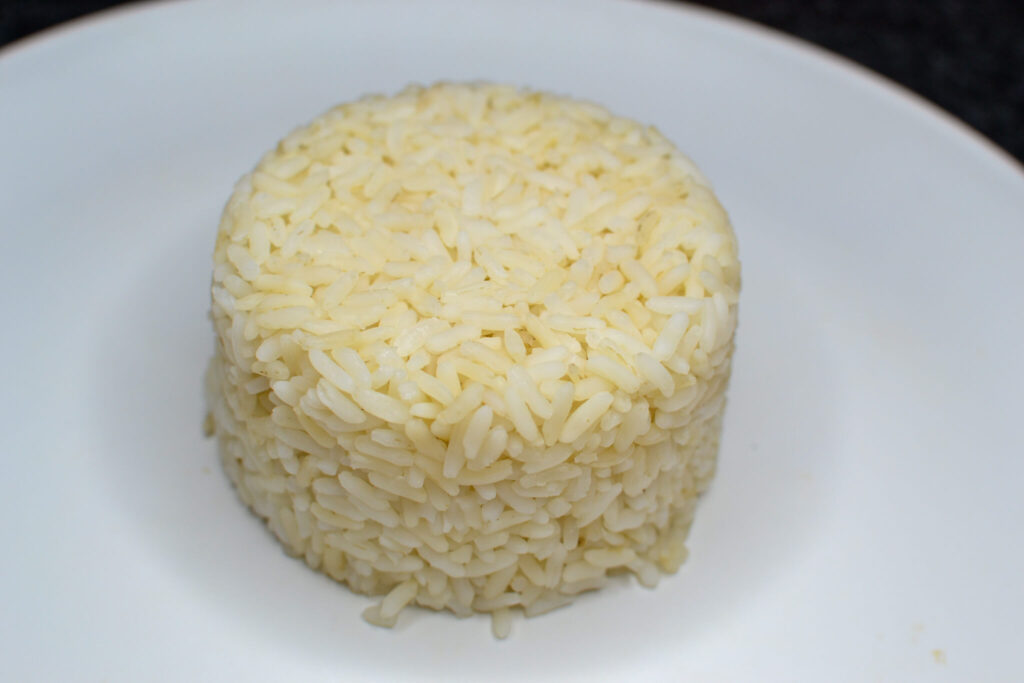
When plating, pack the rice into a small bowl or measuring cup and invert it onto your serving dish for that classic gumbo presentation. The firm mound of rice in the center of the plate, surrounded by dark, glossy gumbo, makes for a dish that looks as good as it tastes. It’s the visual signature of southern comfort—simple, rustic, and full of heart.
Step 5
Garnish & Enjoy Your Shrimp Gumbo!

To finish, garnish your shrimp gumbo with freshly chopped parsley and thinly sliced green onions. The herbs add a bright, fresh contrast to the deep, smoky broth, giving the dish that final lift. The gumbo should be thick, glossy, and fragrant, with pops of color from the sausage, shrimp, and vegetables peeking through.
Each spoonful is a little bit of everything—tender shrimp, spicy sausage, perfectly seasoned rice, and that rich, flavorful base tying it all together. Serve immediately while it’s still piping hot. Whether you plate it up neatly or scoop it straight from the pot, this shrimp gumbo captures everything people love about southern cooking: warmth, depth, and soul. It’s the kind of dish that fills your kitchen with the smell of home and your bowl with pure comfort.




